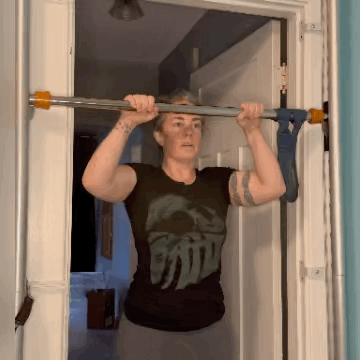Lauren Kehl is a Seattle-based aerial coach, Pilates instructor, and GYROTONIC® trainer known for her technical expertise and innovative approach to coaching. She began her aerial training in 2008 and has been coaching for over 15 years, dedicating her career to refining technique and advancing coaching methodologies. As a curriculum developer and co-leader of the teacher training program at Versatile Arts, Lauren specializes in mentoring other coaches, helping them build a strong foundation in biomechanics, progressions, and student-centered teaching strategies. She has developed Movement First Aerial, her own methodology that focuses on understanding foundational movement patterns to create strength, efficiency, and artistry in the air. Lauren works with students of every level, tailoring her teaching to meet individual needs while fostering growth and confidence. Her approach blends aerial arts with Pilates and The GYROTONIC® Method, creating a holistic foundation for strength, flexibility, and injury prevention. Her work is a trusted resource for aerial instructors and students alike, providing tools to deepen technical understanding and refine their practice. Learn more about Lauren and her resources at laurenkehl.com.
A better bent arm hang
|
Hey Reader, The bent arm hang, or lock off, is an important position for aerial. There are three main muscle groups that are working in this position: the lats, the pecs, and the biceps. The lats, or latissimus dorsi, are the most important muscle. This big muscle starts in your low back, and goes all the way up to the top of your upper arm. The lats pull the arm down when the arm is overhead, they pull the arm behind the body, and they pull the arm into the side of the body. In a bent arm hang, they are holding the arm in place by the side of the body. The pecs, or pectoralis major, are helping the lats hold the arm in place. And the biceps are working to keep the elbow bent. When people struggle with a bent arm hang, there is usually one of three things happening. The Snuggle: All Biceps: Noodle Arms: If you’re struggling with any of these issues, getting an idea of what lat engagement feels like in isolation will help a ton. While there are a lot of different ways to start playing with lat engagement, here’s a super simple, easy way to get a feel for it that doesn’t involve any equipment! Thoughts or questions? I'd love to hear them. Email me and let's chat! Love, Lauren |
Lauren Kehl Aerial Fitness
Lauren Kehl is a Seattle-based aerial coach, Pilates instructor, and GYROTONIC® trainer known for her technical expertise and innovative approach to coaching. She began her aerial training in 2008 and has been coaching for over 15 years, dedicating her career to refining technique and advancing coaching methodologies. As a curriculum developer and co-leader of the teacher training program at Versatile Arts, Lauren specializes in mentoring other coaches, helping them build a strong foundation in biomechanics, progressions, and student-centered teaching strategies. She has developed Movement First Aerial, her own methodology that focuses on understanding foundational movement patterns to create strength, efficiency, and artistry in the air. Lauren works with students of every level, tailoring her teaching to meet individual needs while fostering growth and confidence. Her approach blends aerial arts with Pilates and The GYROTONIC® Method, creating a holistic foundation for strength, flexibility, and injury prevention. Her work is a trusted resource for aerial instructors and students alike, providing tools to deepen technical understanding and refine their practice. Learn more about Lauren and her resources at laurenkehl.com.


